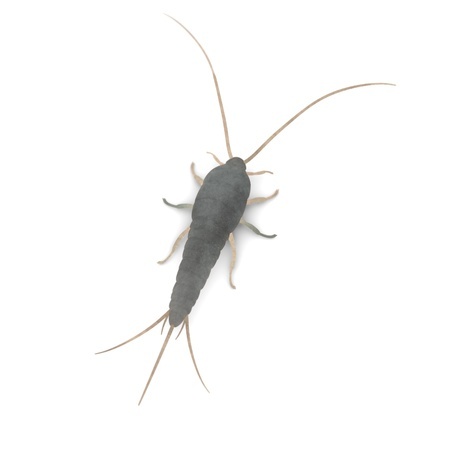
Silverfish
SILVERFISH (Lepisma saccharina)
Description:
Silverfish, like Firebrats, are small, slim, carrot-shaped, wingless insects that typically live outdoors. They are about 1/2 to 1 inch long, with a silver-gray to pearly-bronze color. Their name comes from their shiny appearance, similar to a fish. They have three antennae-like filaments extending from the rear of their tapered abdomen. Silverfish often inhabit cool, damp areas of a building and can feed on paper products and some adhesives used in office supplies.
Biology:
Silverfish are not usually seen because they are nocturnal and can move swiftly when startled. Both silverfish and firebrats are active at night and hide during the day. Silverfish thrive in cool, humid places, like storage areas, bathrooms, and kitchens. On the other hand, firebrats prefer warm, dry environments, often near heaters. New buildings, where the walls are still damp from plaster and green lumber, may have more silverfish. These insects can survive for up to one year without food.
Did You Know?
Typically, silverfish live between three and six years, but can live up to eight if conditions are right.
Impact:
When trapped indoors silverfish will feed on almost anything. They prefer starch, paper, gum, glue, cotton, linen, and other fabrics. That makes the furniture, wall coverings, and many office supplies vulnerable to silverfish damage. They are often found among books feeding on paper and the glue in the binding.
Solutions:
Removing old papers, corrugated boxes, books, and fabrics from storage areas will reduce their numbers by removing food and hiding places. Sanitation is only a first step and alone will not eliminate an infestation. A large infestation usually means the facility has been infested for some time. Insecticidal dust, residual aerosol insecticide, or silverfish bait stations will usually eliminate these pests.
Addtional Links:
http://www.ipm.ucdavis.edu/PMG/PESTNOTES/pn7475.html
